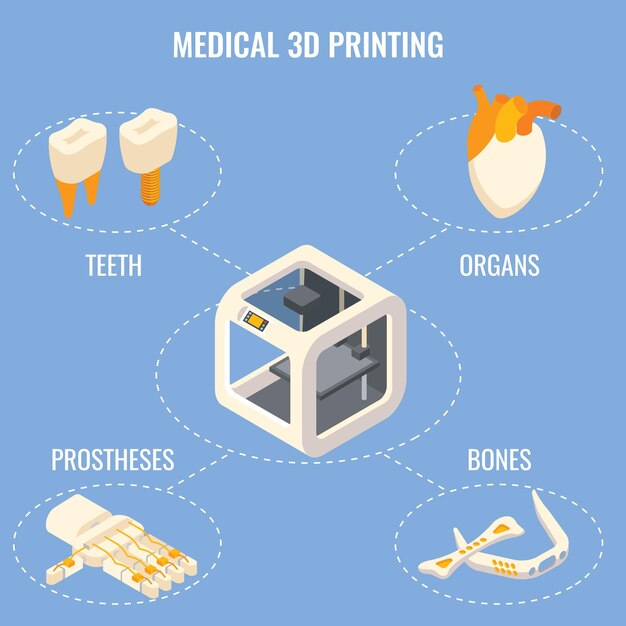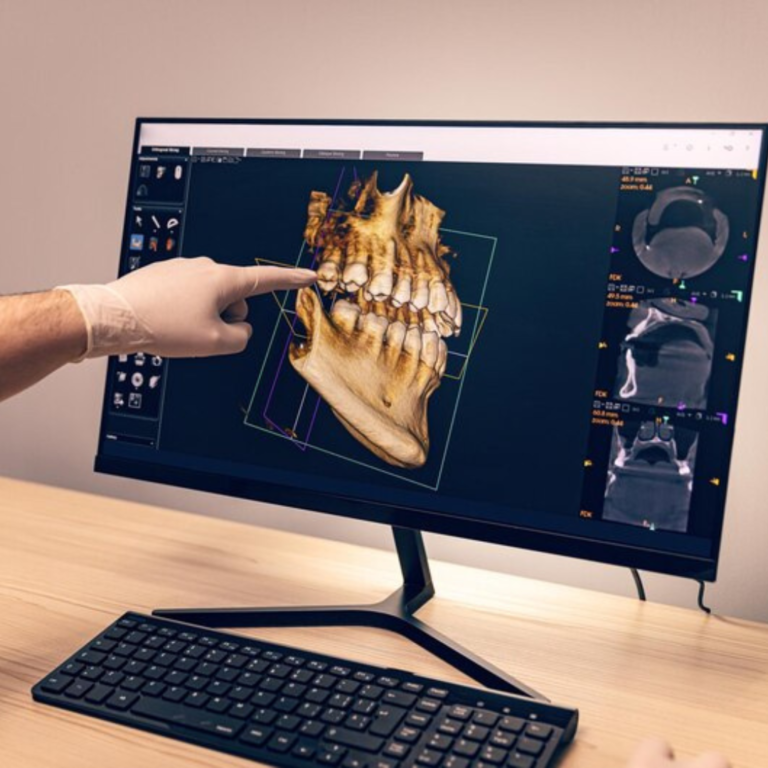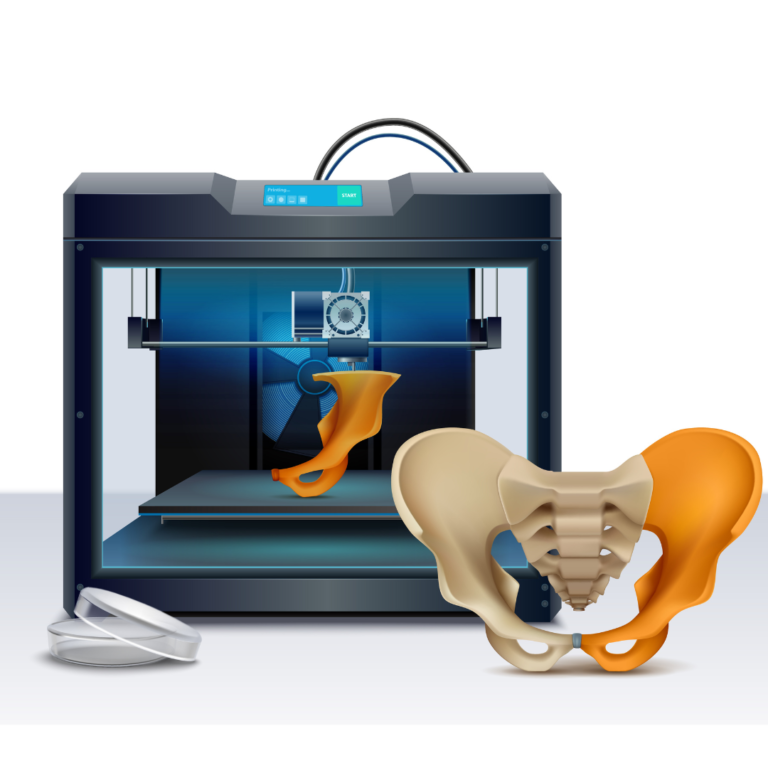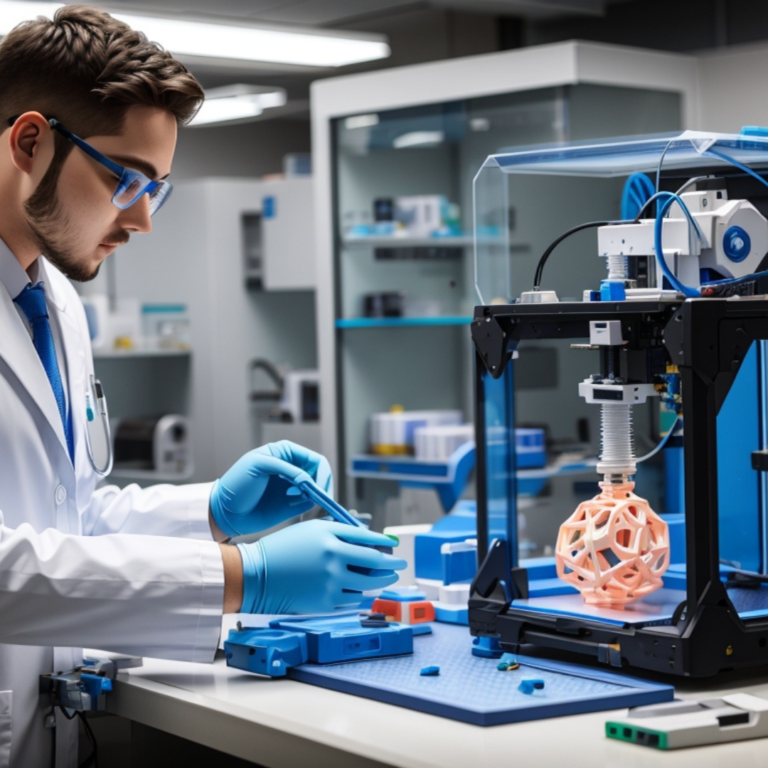3d Modeling has opened a whole new world of possibilities for the Medical Field. From implants to surgeries, 3d Modeling provides us with advanced, precise, and more personalized treatments. The traditional way of approaching healthcare has changed, thanks to 3d Modeling. Each individual is different and the ability to offer personalized treatment is a gift to the medical industry.
In this blog, we will explore the use of 3d Modeling in the medical field and how it is changing the way we approach healthcare.
5 Use of 3D Modeling in the Medical Field
1. Patient-Specific Implants

In 2019, doctors at Morriston Hospital in Wales used 3d Modeling and printing to create a customized implant for a man who suffered from a rare bone disorder. It was possible to design an implant to fit the man’s skull perfectly only due to 3d Modeling and printing.
There might have been complications in the absence of 3d Modeling and printing technology as there would have not been a way easier and more effective than 3d Modeling and printing to deal with the situation. As traditional implants come in standard sizes and shapes, it becomes difficult to fit the requirement seamlessly. 3d Modeling and printing enable the creation of perfect implants reducing the risk of complications and providing better results.
2. Surgical Planning

In the field of Surgical planning, 3d Modeling, and printing helps in identifying and forecasting future complications which reduce the risk associated with the surgery, resulting in positive outcomes.
In 2018, surgeons at Boston Children’s Hospital used 3d Modeling for complex heart surgery. A 3-year-old had a rare congenital defect, the design helped the surgeon forecast future complications and lead to better decisions.
3. Medical Training

3d Modeling is also changing the way medical professionals are trained. Medical students and residents can use 3d Modeling and printing to create models of human anatomy. This technology enables them to practice procedures and gain experience without the need for human cadavers.
Additionally, 3D models can be used to teach patients about their conditions and treatment options, providing them with a better understanding of their health. In 2020, medical students at the University of Michigan used 3d Modeling and printing to create models of human organs, allowing them to practice surgeries and gain experience without the need for human cadavers.
4. Prosthetics

In 2019, researchers at the University of California used 3d Modeling and printing to create a prosthetic hand for a 4-year-old girl born without fingers. 3d Modeling and printing allowed the doctors to create the left- hand with a resemblance to her right hand which allowed her to perform tasks effectively.
With 3d Modeling and printing, prosthetic limbs can be designed to match a patient’s specific anatomy. It helps in making prosthetics affordable and also improves efficiency. Limp is perfectly designed for individuals to make them feel comfortable and natural.
5. Medical Research and Education

In 2020, researchers at Bristol used 3d Modeling and printing to create a model of the brain for a baby who had died from a rare neurological disorder. The model allowed the researchers to study the disorder, its impacts, and possible solutions.
Medical professionals and teachers use 3d Modeling and printing to create models of organs, tissues, hearts, bones, and other structures for research and education purposes. The study can be conducted easily when a model is available. Similarly, students can grasp and learn quicker when they are able to interact with the object. 3d Modeling and printing have made it possible to create duplicates of fossils, allowing scientists to study ancient creatures and learn more about the history of life on Earth.
Future Scope of 3D Modeling in the Medical Field
As this technology continues to evolve, it has the potential to unlock even more possibilities in the medical field. The future of 3d Modeling and printing can open doors to numerous possibilities. Health is the most concerned factor and 3d Modeling and printing is helping researchers and doctors provide the most effective and personalized solutions.
With the continued development of this technology, complex situations will be handled easily, and much more personalization will come into this field. 3d Modeling and printing in the future will change the way the healthcare industry is approached and bring in many more possibilities and innovations.
Wrap up
In conclusion, 3d Modeling is revolutionizing the way we approach healthcare. It is improving patient outcomes, making treatments more personalized, and enhancing medical training and research. As this technology continues to evolve, we can expect even more exciting developments in the medical field. From patient-specific implants to complex surgical planning, 3d Modeling is changing the face of healthcare.
How Threedeify can help you to create 3D model in the Medical Field?
We are a leading 3D design and prototype service provider with a strong commitment to making a meaningful impact in the medical industry. Leveraging our extensive expertise, we offer a wide range of services that contribute significantly to healthcare advancement. One of our core offerings is the creation of precise anatomical models, surgical guides, and customized implants. These meticulously crafted replicas play a pivotal role in assisting healthcare professionals in planning complex surgeries with unparalleled accuracy. By reducing operative risks, we empower medical teams to deliver better patient care and outcomes.
Our capabilities extend to the production of patient-specific prosthetics and orthotics, ensuring an optimal fit and functionality that enhances the quality of life for individuals. We take pride in our ability to provide customized solutions that cater to the unique needs of each patient.



